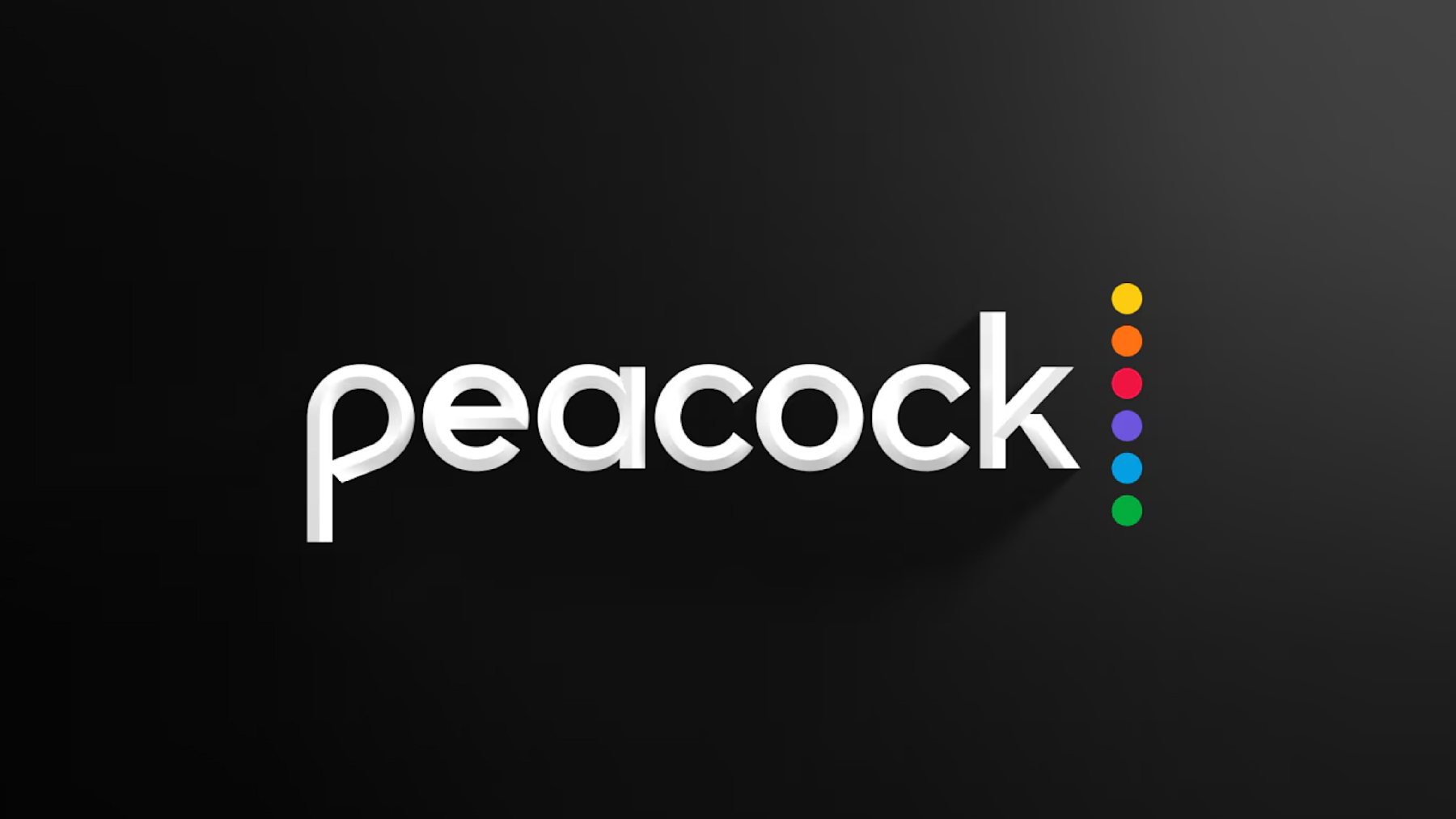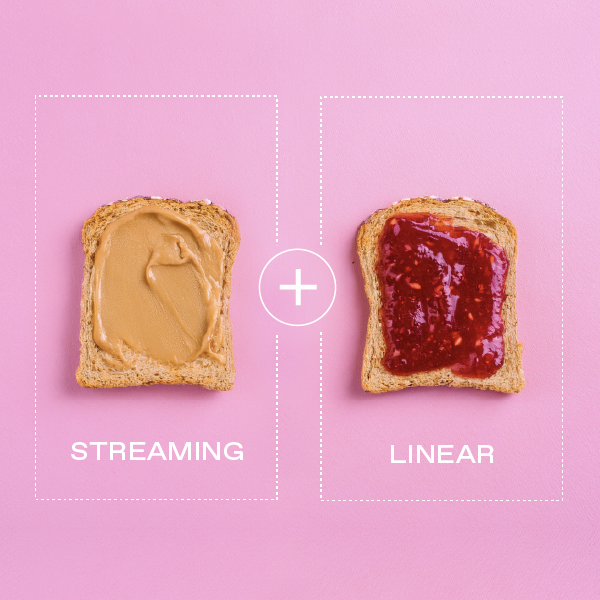
What Marketers Should Know About Peacock Advertising (Before You Buy)
As connected TV (CTV) advertising surges and streaming platforms continue reshaping how Americans consume premium video, NBCUniversal’s streaming service, Peacock, stands out as the youngest major player with rapidly growing reach, distinctive ad-supported viewer penetration, and innovative targeting and format options for brand marketers.
Peacock advertising in 2025 (and beyond) synthesizes industry studies, platform data, and proven marketing best practices to map ad formats, audiences, and strategic opportunities across its tiered plans. Advertising on Peacock also takes into account evolving formats of programming, live sports, and premium content to create measurable opportunities for brands looking to take their advertising to the next level.
The Peacock Platform at a Glance: Growth, Tiers, and Market Standing
Peacock has established itself as an essential force in the U.S. streaming landscape, blending ad-supported access with a roster of premium content from NBCUniversal's vast entertainment, sports, and news libraries. As of mid-2025, Peacock counts over 41 million paid subscribers, with almost 78% opting for ad-supported plans. This accounts for one of the highest percentages among major streaming platforms. By year’s end, Peacock is projected to reach over 80 million viewers, reflecting double-digit year-over-year growth and a strong brand among younger and diverse audiences.
This rapid expansion is supported by Peacock’s differentiated hybrid model, which includes ad-supported and "ad-light" paid plans. These various subscription plans enable advertisers to reach a massive, engaged audience across multiple touchpoints:
Peacock Premium: Ad-supported, full content access (now $10.99/mo)
Premium Plus: Mostly ad-free, with some exceptions (now $16.99/mo)
Emerging “Peacock Select”: Lower-cost, ad-heavy option with a limited content library excluding sports ($7.99/mo, in trial)
As of July 2025, Peacock claims the second-highest share of ad-supported subscribers among U.S. OTT platforms, second only to Amazon Prime Video. In the U.S. streaming hierarchy, it now trails only Netflix, Amazon, Disney+, Max, Paramount+, and Hulu for total subscribers. This reflects strong brand equity and a distinctive offering in sports, news, and original entertainment.
Peacock Plan | Price | Content Access | Ads | Live NBC Channel | Offline Viewing |
|---|---|---|---|---|---|
Peacock Free | $0/month | ~13,000 hours of select content | Yes (limited to ~5 min/hr) | No | No |
Peacock Select (new) | $7.99/month or $79.99/year | NBC and Bravo current & library shows + select TV library & streaming channels | Yes (limited to ~5 min/hr) | No | No |
Peacock Premium | $7.99/month or $79.99/year | Full library (~80,000+ hours), next-day NBC shows | Yes (intermittent ads) | No | No |
Peacock Premium Plus | $13.99/month | Same as Premium + local NBC live stream | Ad-free except for live sports, news programming, & select titles | Yes | Yes (select titles) |
The addition of Peacock Select was announced back in July 2025 offers a lower-priced subscription plan but omits several popular titles.
While a ‘Premium Plus’ subscription boasts an ad-free viewing experience, certain programming such as live sports, live news broadcasts, and select Peacock titles may still include commercial breaks.
Peacock’s Approach to Ads: Inventory, Formats, and Frequency
Ad-Supported and Ad-Free Options
A defining characteristic of Peacock is its exceptional embrace of the ad-supported streaming model. While several streaming competitors have launched ad-supported tiers, Peacock boasts the highest ad-supported user penetration among major Subscription Video On Demand (SVOD) platforms, with nearly 4 in 5 paid subscribers on a plan with ads. This data demonstrates consumer comfort with the value-exchange of lower price for limited ad interruptions.
Peacock’s tiered structure preserves a clear path for advertisers to reach a large portion of the userbase, especially as Premium Plus subscribers also receive ads during some sports and live programming due to rights restrictions.
Ad Load and Breakdown
Peacock is intentional about limiting ad load to 4-5 minutes per hour for standard programming, significantly less than traditional linear TV (which averages 13–18 minutes) and notably lighter than Hulu, which often approaches 10 minutes per hour on its most affordable plans. For movies, viewers often encounter a brief pre-roll ad (typically around 2-3 minutes) with a mid-roll spot typically appearing in longer films. Episodic and unscripted content usually sees shorter, more frequent breaks, but total ad time remains below legacy TV standards.
Live sports and event broadcasts naturally feature higher ad frequencies, mimicking the cadence of traditional TV but also offering innovative sponsorship placements, in-broadcast overlays, and dynamic ad insertions.
Peacock Ad Formats: An Expanding Toolbox
Peacock gives marketers a diverse slate of high-impact formats for engaging audiences, each suited to different awareness and performance objectives:
Ad Format | Description | Best Use Cases |
|---|---|---|
Video Ads | Non-skippable pre-roll, mid-roll, or post-roll spots (6-90 seconds) | Maximizing reach during high-engagement content |
Screensaver Ads | Static/animated full-screen displayed when the app is idle or paused | Persistent, unmissable branding |
Home Screen Banners | Static carousel banners on the Peacock browse/home screen | Top-of-funnel brand awareness and recall |
Marquee Ads | Seamless, in-content graphics integrated within programming | Brand integration without content interruption |
Binge Ads | Viewers opt in to longer pre-roll for fewer mid-roll breaks ("ad-light" bingeing) | Enhanced brand favorability, improved experience |
Pause Ads | Static takeover displayed after viewers pause content for >5 seconds | Shoppable, high-attention engagement moments |
This comprehensive advertising inventory which includes recent innovations like Live in Browse autoplay tiles, dynamic overlays in broadcasts, and interactive units offers marketers a flexible solution to tailor campaigns for maximum engagement and suitability to diverse brands and objectives.
Audience Targeting and Data Capabilities
Peacock leverages NBCUniversal’s proprietary first-party data and advanced CTV/OTT targeting infrastructure to help brands reach relevant audiences with precision. Marketers have access to a variety of audience segmentation and optimization tools:
Demographic: Age, gender, household income, education, geography
Psychographic: Family status, interests, shopping/in-market categories
Behavioral: Viewing habits, binge behavior, programming genre preferences
Device-Level: CTV, desktop, mobile, streaming platforms and smart TVs
Custom Audiences: Third-party segment integrations (e.g., Experian, Acxiom, LiveRamp), lookalike modeling, and CRM uploads
NBCUniversal’s Peacock Ad Manager empowers both self-serve and programmatic buyers to execute campaigns with real-time optimization, frequency capping, sequential messaging, and creative rotation to mitigate ad fatigue. Dynamic ad insertion (DAI) and machine learning enhance creative relevancy and campaign performance down to the household.
Notably, the platform’s data is privacy-compliant (CCPA, GDPR, etc.) with opt-out and preference management baked into the user interface and ad experience, balancing personalization with consumer trust.
Analytics, Measurement, and Performance Metrics
Peacock’s advertising platform delivers advanced TV measurement methodologies designed to give marketers the precision and transparency they expect from modern digital attribution only applied to premium streaming TV. Through easy-to-understand dashboards focused on data, advertisers can access granular insights across:
Impressions, view-through rates, and video completion rates for every campaign
Unique reach and frequency broken down by creative, device type, and audience segment
Site and app visit attribution for direct response and performance-driven campaigns
Engagement metrics including clicks, conversions, app downloads, and QR code scans
Brand lift measurement including favorability, ad recall, and purchase consideration, all through trusted third-party research partners
Peacock supports custom KPIs aligned to unique campaign objectives, such as cost per completed view (CPCV), cost per site visit (CPV), and return on ad spend (ROAS). These metrics integrate seamlessly with industry-standard measurement providers like Nielsen, Comscore, and Kantar, as well as independent attribution solutions.
With real-time reporting through the Peacock Ad Manager, marketers can continuously optimize targeting, creative rotation, and budget allocation to maximize efficiency and impact. This level of actionable, outcome-focused visibility, whether aimed at brand lift or direct response, sets Peacock apart from traditional TV, enabling advertisers to measure and optimize with the speed and precision of digital media.
Peacock Ad Manager: Platform Features and Buying Experience
Peacock’s Ad Manager delivers a self-serve and programmatic interface providing flexibility, transparency, and control for buyers ranging from SMBs to major agencies:
Intuitive Workflow: Set campaign objectives (awareness, consideration, conversion), allocate daily or total budget, specify targeting parameters, and upload creatives within a streamlined workflow.
Bid and Spend Control: Set cost caps, bid floors, or define cost-per-impression for stricter control. The minimums are notably accessible versus traditional TV, making the platform “open to all sizes.”
Creative Management: Upload a range of video (6, 15, 30, 45, 60, 90 seconds) and static assets, with built-in QC on specs, creative rotations to avoid fatigue, and A/B testing.
Optimization: Automated, AI-driven campaign optimization continuously reallocates impressions, frequency, and creative delivery for the best-possible performance against stated KPIs.
Measurement: Real-time and historical campaign reporting, with exportable data for integration with cross-channel dashboards and media-mix modeling.
Additionally, programmatic transactions are available via major DSPs, providing for both fixed (guaranteed), PMP, and open auction campaigns as desired. This multi-route approach ensures access for both in-house teams and agency partners although availability of each campaign type will vary by provider.
Peacock Advertising Pricing and Cost Considerations
Most brands will find Peacock a highly cost-effective entry point to CTV/OTT advertising when compared to legacy TV or high-priced platforms like Netflix. Importantly, ad spend can be capped and adjusted dynamically, empowering brands to scale spending only when outcomes justify further investment.
Key Factors Influencing Peacock Ad Costs | Explanation |
|---|---|
Ad Format | Premium sponsorships (Binge, Marquee) and high-impact units cost more |
Audience Targeting | Narrower/geographic/behavioral segments result in higher CPMs |
Seasonality/Dayparting | Major events (Olympics, NFL, NBA, etc.), holidays, and primetime cost more |
Campaign Duration and Frequency | Higher frequency and longer flights increase outlay |
Creative Rotation | More creative versions can minimize fatigue but may affect average CPM |
Transactional Model | Self-serve, direct, or PMP buying methods all carry different minimums |
Bidding Competition | High-demand bursts for hit shows/events inflate spot pricing |
Peacock is a vibrant ecosystem for streaming advertising, offering light ad loads, innovative formats, and a platform where most users accept the ad exchange. With cutting-edge measurement, targeting, and a powerful content engine, Peacock is ideally situated for marketers seeking both brand scale and measurable, digital-style performance. Partnering with an expert like Tatari ensures you maximize every dollar spent, and every impression delivered, driving meaningful results in an increasingly complex CTV world.
Peacock Viewer Demographics and Audience Insights
Peacock’s meteoric growth is anchored in its demographically diverse, highly engaged, and younger-than-average streaming audience:
Gender: Split nearly evenly between male (50.2%) and female (49.8%) viewers.
Age: Largest share belongs to ages 25-44 (over 53% of users), followed by 18-24 and 45-54 brackets.
Ethnicity: NBCUniversal programming has cultural resonance with Hispanic, Black, and Asian-American viewers, as amplified by Telemundo, Bravo, and diverse originals.
Behavioral: Younger viewers (18-34) prefer ad-supported plans by a high margin, with binge-watching and mobile usage rising each year. Female users are more likely to watch ad-supported content daily.
Geography: Over 97% of viewership comes from U.S. users, predominantly urban and suburban, but representation in every major media market.
Peacock’s subscriber base skews toward Millennials and Gen X, but is gaining share among Gen Z, especially as rights to live sports and entertainment programming like World Wrestling Entertainment (WWE), Premier League, and NBA migrate to exclusive streaming broadcasts. Premium sports and blockbuster films are key in drawing male audiences, while fan-favorite NBCU reality, news, and daily programming engage women and families.
Viewer engagement: On average, Peacock users watch more programming hours each month than legacy NBC viewers which serves as a signal of the platform's deep “lean-back” appeal and opportunities for advertisers to connect with invested audiences.
Best Practices for Peacock Advertising
1. Align Message With Platform and Content
Peacock’s premium content sets a high creative standard. Ads with crisp visuals, clear messaging, and authentic storytelling outperform those that feel out of place. Creative should be tightly aligned with the tone, genre, or interests of scheduled programming. Contextual placement around trending series, movies, or sports can boost lift and recall.
2. Leverage Advanced Targeting
Strategically pair demographic, behavioral, and first/third-party segments for pinpoint targeting. Avoid definition that’s too narrow as this may limit scale. Instead, optimize for creative resonance with each identified group.
3. Diversify Creative and Rotate Assets
Peacock requires multiple creative assets per campaign, reducing fatigue and increasing message frequency without repetition. A/B test copy, calls to action, visual approaches, and story arcs, then optimize delivery to the best-performing versions.
4. Monitor, Measure, and Optimize Continuously
Leverage real-time analytics to track impressions, completions, conversions, and lower-funnel outcomes. Regularly adjust frequency, creative mix, and audience slices to maximize engagement and minimize wasted spend. Data-driven iteration is essential in maximizing CTV success.
5. Maximize High-Impact Formats and Sponsorships
For launches, branding pushes, or sporting tentpoles, consider sponsorship placements such as “binge ads” or unique in-event activations. These premium units, though higher in cost, deliver outsized brand lift and engagement.
To understand Peacock’s tentpole calendar alignment, here’s a sample 2025 calendar for this type of content based on both audience and brand opportunity:
Quarter | Tentpole Content | Audience / Brand Opportunity |
|---|---|---|
Q1 | Sunday Night Football Playoffs & Super Bowl Week Coverage | Massive live sports audience; high engagement and brand-safe environment for national campaigns. |
The Traitors (Season Launch) | Global sports fans; aligns with travel, lifestyle, and consumer goods messaging. | |
Q2 | Premier League Season Finale | Global sports fans; aligns with travel, lifestyle, and consumer goods messaging. |
Bel-Air (New Season) | Flagship scripted drama; strong appeal to younger, diverse audiences. | |
Q3 | Poker Face (New Season) | Critically acclaimed original; opportunity for premium storytelling integrations. |
Based on a True Story (Season Launch) | Dark comedy thriller; aligns with entertainment, tech, and lifestyle brands. | |
Q4 | NFL Regular Season & Thanksgiving Games | Peak sports viewership; ideal for holiday retail and Q4 push campaigns. |
SNL50: Beyond Saturday Night | Cultural milestone event; perfect for brands seeking cultural relevance and mass reach. | |
Devil in Disguise: John Wayne Gacy (Oct 16) | True crime docuseries; high binge potential and engaged niche audience. |
6. Balance Ad Load to Viewer Tolerance
While ad loads are modest on Peacock, pay attention to break cadence and frequency capping. Overexposure can lead to negative sentiment, even when total ad time is competitive with the market
7. Spotlight Interactive and “Pause Ads”
Pause ads and shoppable formats enable unique brand engagement during natural viewer breaks, generating higher memorability and consideration.
8. Integrate With Cross-Channel and Omnichannel Strategies
Use digital signals such as retargeting, sequential messaging, and device-level engagement to move viewers from CTV to mobile/desktop for conversion, and reinforce messages across platforms for cumulative effect.
Comparative Analysis: Peacock vs. Hulu
A strategic perspective on CTV media planning requires understanding the nuanced differences among leading platforms. Here are some Peacock benchmarks against Hulu, the most prominent ad-supported OTT rival.
Feature | Peacock | Hulu |
|---|---|---|
Monthly (Ad/Ad-Free) | $10.99 / $16.99 (as of July 2025) | $7.99 / $14.99 |
Ad Load (hr) | 4-5 min | 9-12 min (Basic tier) |
Ad-Free Penetration | ~23% | ~32% |
Live Sports/News | Extensive (NFL, NBA, soccer, WWE, Olympics) | News via ABC, live sports with Hulu+Live TV |
Content Library | 80,000+ hrs NBCU, Universal, WWE, sports | 40,000+ TV episodes, Disney, Live TV |
Device Support | 3 simultaneous streams, wide device coverage | 2 streams (more with upgrade), wide |
Ad Targeting/Formats | Highly advanced, innovative formats, Pause ads | Mature, robust, interactive placements |
Key takeaways: Peacock stands out for its lighter ad load, massive sports/events portfolio, and robust integration of sponsorships, binge ads, and originals. Disney-owned Hulu offers broader third-party content variety, bundled access (with streaming services like Disney+, ESPN Unlimited, and HBOMax), and more established audience modeling but a heavier ad experience for entry-level plans.
Integrating Peacock Into a Smart Media Strategy
Peacock’s depth of content, growing reach, and digital-native targeting make it uniquely well-suited for a modern, diversified TV plan. However, the CTV/OTT landscape is complex, with platform strengths, data access, and inventory availability fragmented across vendors and walled gardens.
Key strategy considerations for media buyers:
Reserve Peacock inventory for both upper-funnel brand campaigns and outcome-driven direct response, leveraging cross-platform data to attribute results
Align event-based buys (Olympics, Super Bowl, March Madness) with audience intent and sponsorship availability
Integrate sequencing with Hulu, Netflix (as available), Paramount+, and linear TV for maximum incremental reach, frequency optimization, and omnichannel presence
Partner with technology platforms, like Tatari, that provide transparent reporting, AI-powered planning, proven media mix modeling, and the buying scale needed for best pricing and effectiveness
Make Peacock Work in Your Media Mix with Tatari’s Expertise
To unlock Peacock’s full power, brands need a partner with direct access, outcome-based measurement, and clear media expertise. Tatari stands out as a leader for modern TV marketers seeking to harness CTV for maximum ROI:
Direct publisher deals: Full access to Peacock (and all major streaming platforms) inventory, including premium sponsorships, binge ads, and exclusive event activations
Smarter buying with AI: Leverage Tatari’s AI-powered planning engine to optimize campaign outcomes, reduce wasted spend, and scale budgets only where performance warrants
True outcome measurement: Go beyond impressions to measure cost-per-visit (CPV), cost-per-acquisition (CPA), and return on ad spend (ROAS)
Agile, self-serve, or managed: Options for both in-house marketing teams and agencies to plan, buy, and measure, with full transparency and control
Incorporating Peacock Into Your Streaming Strategy
Ready to see how Peacock fits into your broader streaming strategy? Tatari offers performance-focused, fully transparent integration across all major streaming platforms like Peacock as well as linear TV publishers.
Schedule a demo today to see how Tatari can help you:
Determine where and how Peacock belongs in your media mix
Build efficient, outcome-driven cross-platform strategies marrying linear TV, Hulu, Netflix, and more
Use data-backed planning and real-time optimization for the best campaign results
Connect your brand to the right audiences with confidence and drive true business outcomes
Let’s build your next-generation TV media plan together. Explore Tatari and schedule a demo today!
Frequently Asked Questions About Peacock Ads
Does Peacock Premium have ads?
Yes. Peacock Premium is ad-supported, with about 3–5 minutes of ads per hour.
Is Peacock Premium Plus completely ad-free?
Not entirely. While most on-demand Peacock content is ad-free, Premium Plus subscribers are still served ads during live sports, local NBC channels, and certain licensed programming.
Why am I still seeing ads on Peacock Premium Plus?
Licensing agreements and live broadcast rules require ads in certain programming.
How many ads per hour does Peacock show?
On ad-supported tiers, expect 3–5 minutes per hour—lighter than traditional TV.
What kind of ads show up on Peacock?
Standard 15–30 second spots, pre-rolls, mid-rolls, interactive ads, and sponsored content.
Can I advertise on Peacock directly?
Yes, through NBCUniversal’s ad sales team, or via partners like Tatari for more efficient planning and measurement.
Can Tatari track performance on Peacock ads?
Absolutely. Tatari can measure impressions, reach, and downstream actions like site visits or conversions.
How can I watch Peacock without ads?
Upgrade to Premium Plus, though some live and rights-restricted content will still have ads.
Why does Peacock show ads even when I pay?
Because of licensing and live programming requirements.
What is the ad load on Peacock compared to other streamers?
Peacock’s 3–5 minutes/hour is lighter than Hulu’s 7–9 minutes and far less than linear TV.
How do Peacock ads compare to Hulu or YouTube TV?
Peacock generally serves fewer ads per hour, with shorter breaks and more targeted placements.
Can you skip ads on Peacock Premium Plus?
No. Ads in live or rights-restricted content cannot be skipped.

Vicky Chang
I love helping businesses grow.
Related
Why Retargeting Might Be TV’s Smartest Entry Point
CTV is transforming traditional retargeting by combining the engagement of TV advertising with the precision of digital targeting, offering brands a low-risk, high-impact way to drive conversions and test a powerful new performance channel.
Read more
4 Questions to Ask Your Media Buying Partner
TV buying has entered the data-driven age. Here are 4 questions to ask your media buying partners before making a TV buy in this modern buying era.
Read more
Why Streaming + Linear Work Better Together
When one advertiser shifted from a dual-channel TV strategy to streaming-only, performance quickly declined. See what happened when they turned linear back on.
Read more


